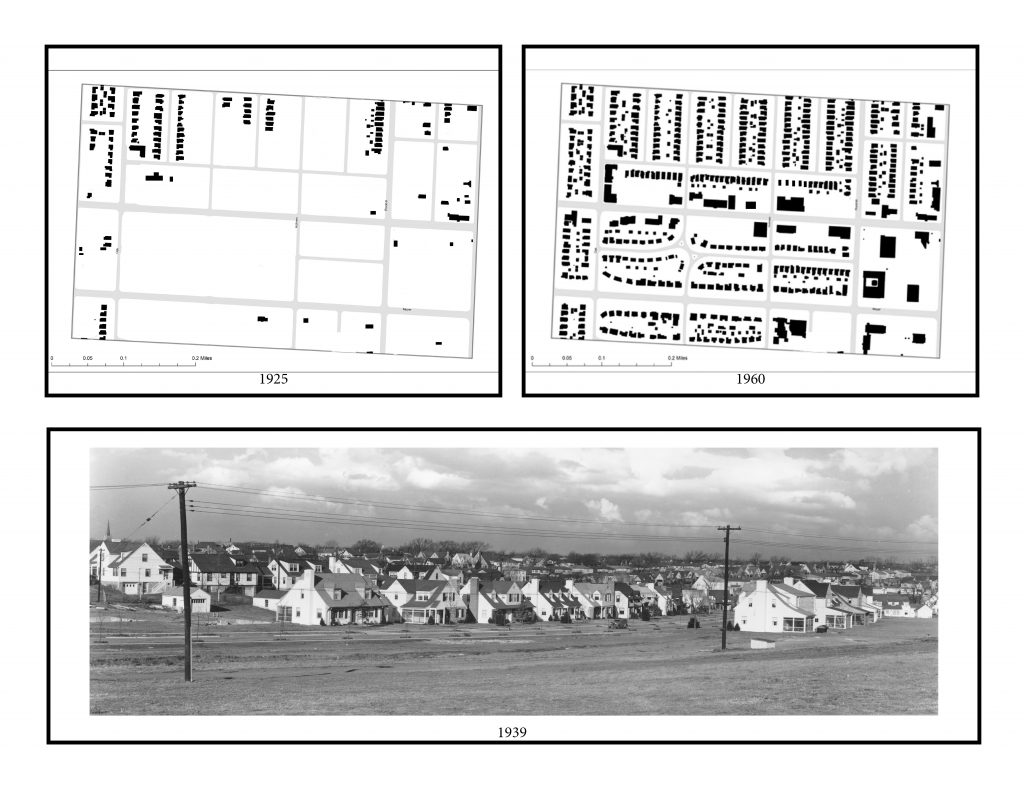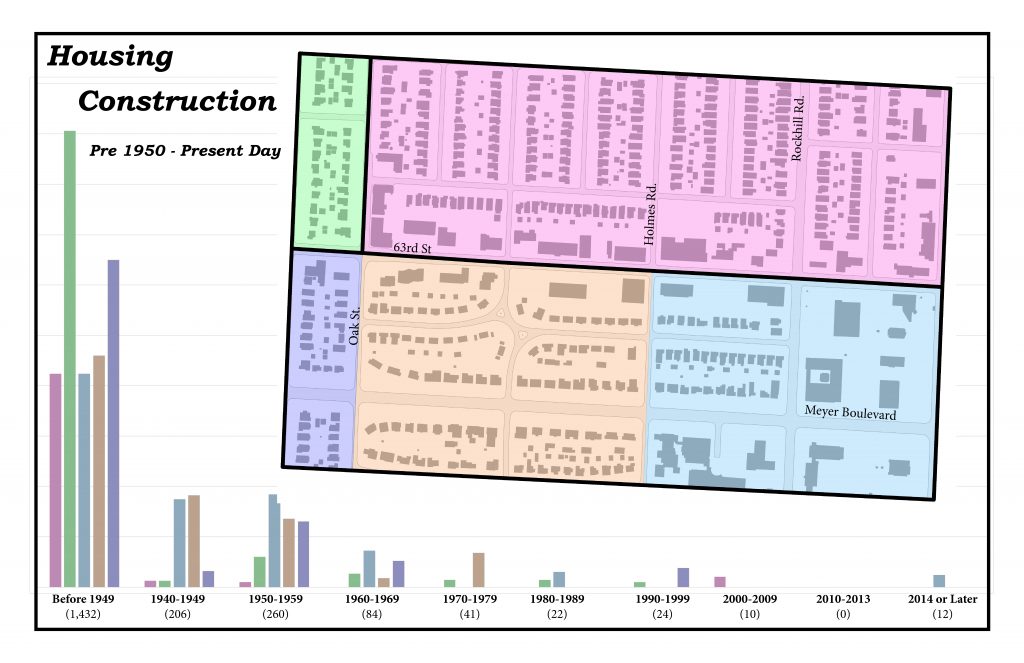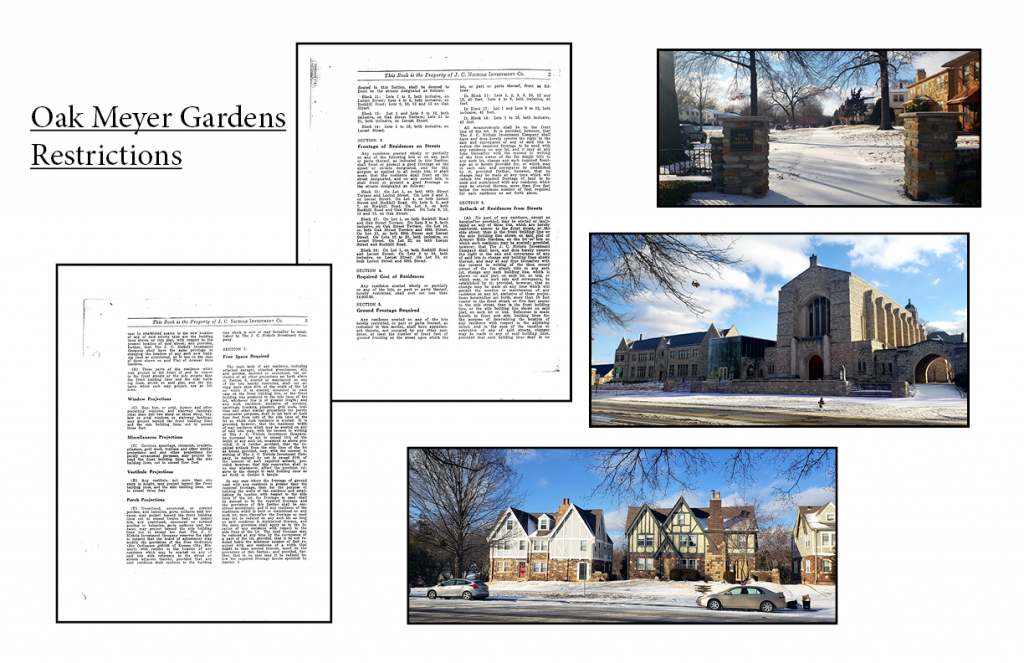
Historical Figure Grounds made by Bradley Hocevar. Bottom Image from SHSOM
From 1925 to 1960 drastic changes swept over the 63rd Street corridor between Oak St. and Rockhill Rd. As residence were eager to escape the congested and over crowded urban core, developers and home-builders saw ample opportunity in vacant land along the emerging commercial hub. Astor Place, which was established in 1887 by Eugene Hill, and later incorporated into the 49/63 Neighborhood Coalition in 1996, was one of the first neighborhoods to take advantage of the city’s new streetcar system.

Source: Social Explorer
While nearly all construction took place before 1950 in the Astor Place neighborhood, J.C. Nichols chose to take a much more patient and inclusive approach to the development of his Oak Meyer Garden neighborhood. This land was purchased in May of 1927, before the construction of Cherry St. or 63rd Terrace. It reaches north south from 63rd St. to 69th St. and east west to Oak St. and Holmes Rd., strategically placed near many of his own commercial investments.

Picture by Bradley Hocevar. Historical Restrictions From Oak Meyer Grandens Homeowners Association.
To this very day, the neighborhood has seen little change due in part to the seemingly endless restrictions placed upon homeowners. Stringent guidelines bar owners from veering astray from Nichols original vision for the neighborhood which emphasized beauty and conformity. This of course has had its drawbacks which continue to linger over and divide our city today.
Although there has been relatively minor spatial changes within the area between Oak and Rockhill Rd. since 1990, a number of new businesses have emerged in recent year along 63rd St. Heirloom Bakery, Canihaveabite, and BKS Artisan Ales have flourished among a new, younger demographic in the area. Mixed use buildings have replaced older, deteriorating ones allowing residence to both work and relax in a unique part of our city without changing much of its historical charm.